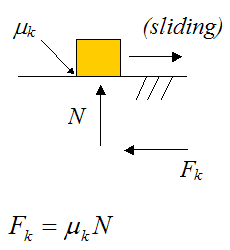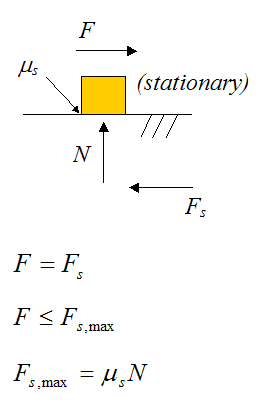About me and why I created this physics website.
Friction
Kinetic FrictionKinetic friction is the friction present when there is relative sliding between two objects, such as a crate sliding on a floor. This friction force always acts opposite to the direction of motion.
The figure below illustrates this.

Where:
μk is the coefficient of kinetic friction between the two objects
N is the normal force perpendicular to the sliding surface
Fk is the kinetic friction force
Static Friction
Static friction is the friction present when a force is applied, but there is no relative sliding between the two objects. This friction force always acts opposite to the direction of the applied force.
If the applied force (F) is less than or equal to the maximum static friction force (Fs,max), the object won't slide. This means that the applied force equals the static friction force (F = Fs in the figure below). If this "threshold" force is exceeded (F > Fs,max), the object begins to slide and kinetic friction takes over.

Where:
μs is the coefficient of static friction between the two objects
N is the normal force perpendicular to the sliding surface
F is the applied force
Fs is the static friction force
Fs,max is the maximum static friction force
Static friction is usually greater than kinetic friction because of molecular attraction between the two object surfaces. But once this bond is "broken" (and F > Fs,max), sliding begins, and due to the relative motion the molecular attraction is less, meaning that the kinetic friction is less.
It is worth mentioning that the coefficient of friction between two objects is independent of contact area between the two objects and is also independent of the normal force between the two objects.
Return to Useful Physics Formulas page
Return to Real World Physics Problems home page